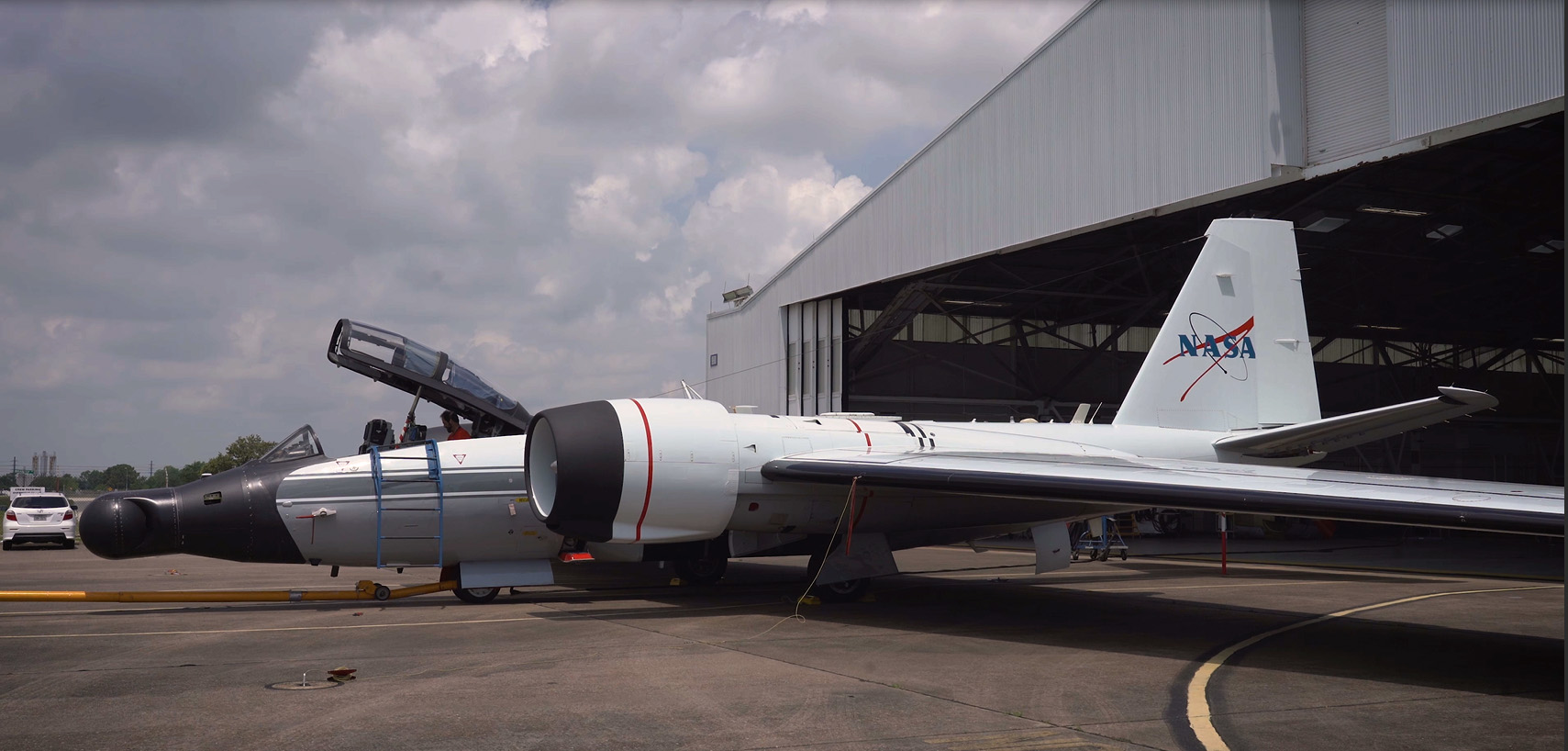SCIFLI partners with the WB-57 aircraft team for most observations. The three mid-wing dual engine aircraft are all based out of Ellington Field at Johnson Space Center in Houston, Texas. Since starting their career in the early ‘70s, the WB-57s have been active in research missions. They are particularly unique because they can fly at high altitudes: up to 60,000 ft. The jets can fly for about 6.5 hours, have a range of 2500 miles, and can carry 8,800 pounds of equipment. Despite being small craft, operated by just the pilot and the sensor equipment operator (SEO), the WB-57 has an impressive 122 ½ ft wingspan, nearly doubling the length of its body.

On a typical flight, SCIFLI will mount an imaging payload such as DyNAMITE or SAMI to the nose of a WB-57, which will fly several nautical miles away from its target in order to capture the desired data. The two-axis gimbal mount allows the imaging systems to pivot in both pitch and roll to track the target. This creates a wide range of regard, forming a 200-degree cone of view in front of the aircraft.

